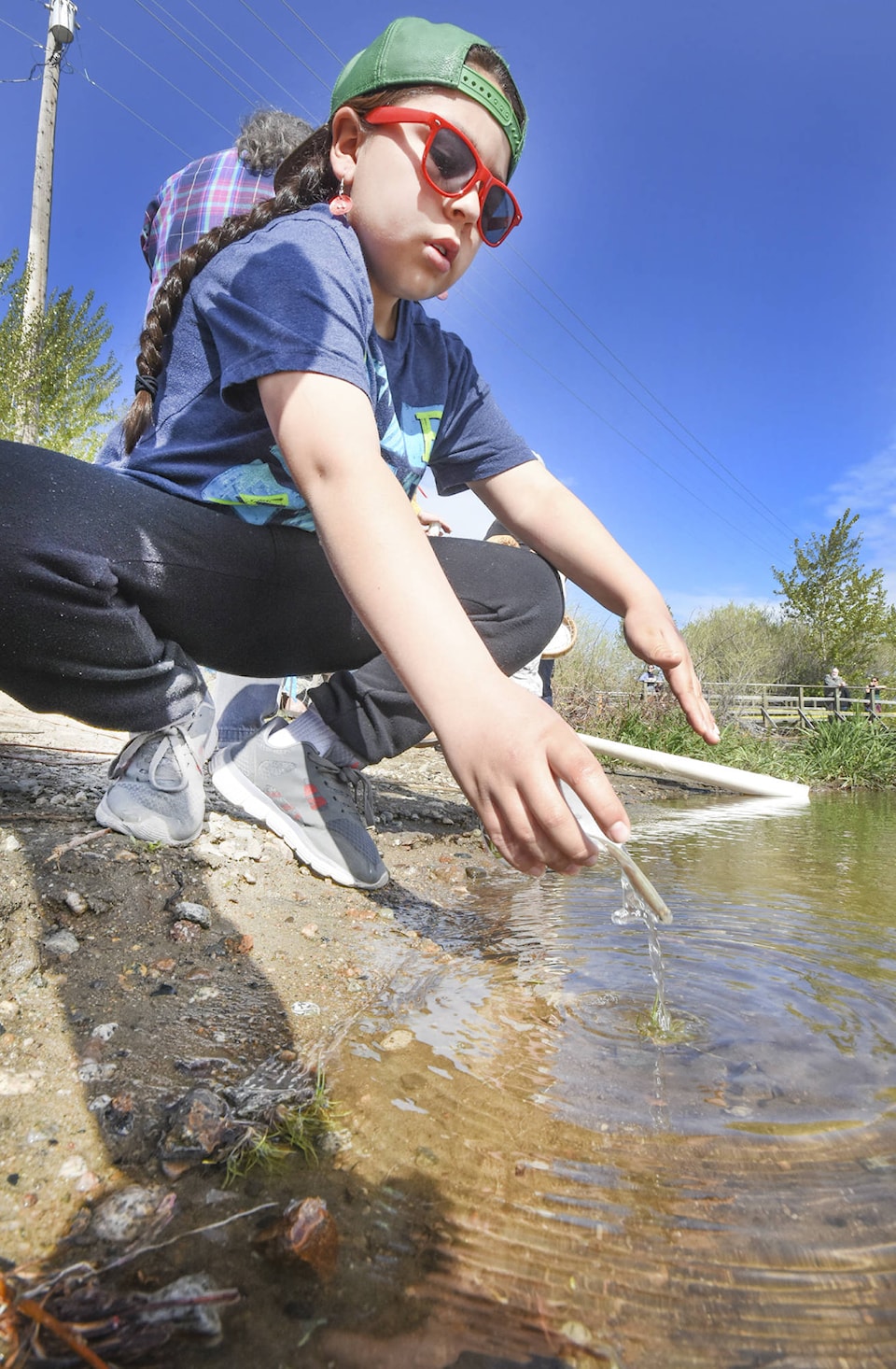Hundreds of students from 15 Okanagan schools helped release the first 5,000 of an estimated 1.23 million sc’win (sockeye salmon) fry into the Okanagan watershed Wednesday in Penticton.
The ceremonial release was the kickoff event for the month as part of the Okanagan Nation Alliance (ONA) commitment to restore the salmon to their natural habitat in the watershed.
To the sounds of the traditional First Nations drummers, one by one, each of the children had an opportunity to release their individual fry into pipe pathways leading to the fast-flowing waters of the Okanagan River Channel, at the bridge to Green Mountain Road where Shingle Creek enters the waterway.
“The significance of the fry release here, today, is that we are bringing back the way the salmon used to come up this river when our people used to be looking after the salmon,” said ONA knowledge keeper Richard Armstrong of the Penticton Indian Band, who was one of the drummers and singers at the release. “The salmon is important not only for the people but for the land and for everything, plants, birds and animals. Salmon not only feeds people, it feeds everything. Even their dead bodies feed the bottom feeders in the rivers, the sturgeons.
“The life cycle and the chain that goes four years to the oceans and back, goes back to the four seasons, the four directions, north, south, east and west.”
Most of the fry were raised at the kł cp̓əlk” stim̓ Hatchery on the Penticton Indian Reserve, which opened in 2014 and has since produced millions of fry to restock the watershed.
The 25,000-square-foot facility has the capacity to raise eight million eggs, annually.
Students also raised their own sockeye at the schools through the ONA Fish in Schools Program, which Armstrong believes is critical to young people’s understanding of nature and their cultural heritage.
“Now we have all the schools, they raise the salmon from the eggs in aquariums and they bring them here. All the prayers that go with that, the young ones are taught in our schools about the importance of the salmon,” he said. “It takes a whole year to teach the kids about the eggs. That is why it is so important for them to bring them here. When they handle that and put it in the water they start realizing how important the water is and how we have to keep the water clean.
“It’s up to them when they become hydrologists and environmentalists, they’re the ones that are going to be taking care of the land, the water, the fish for their kids and their kids and on and on.”
Related: Okanagan Nation sockeye salmon fry release
In the 1960s, the Columbia River Treaty in the Okanagan basin led to the creation of industrial reservoirs, the building of hydro-electric developments on the Columbia River, making it impossible for fish passage, deeply impacting Syilx cultural and food systems.
Years of work and political advocacy, particularly in the last decade, have seen the ONA working with provincial, federal and American First Nations and agencies to rebuild this sockeye run from 3,000 up to 500,000 salmon returning annually.
The alliance was formed in 1981 and represents the eight-member First Nations communities in the Okanagan.
Other ceremonial releases included one in Trout Creek Thursday and later in the month at Mission Creek in Kelowna and 6 Mile Creek at the Okanagan Indian Reserve.
